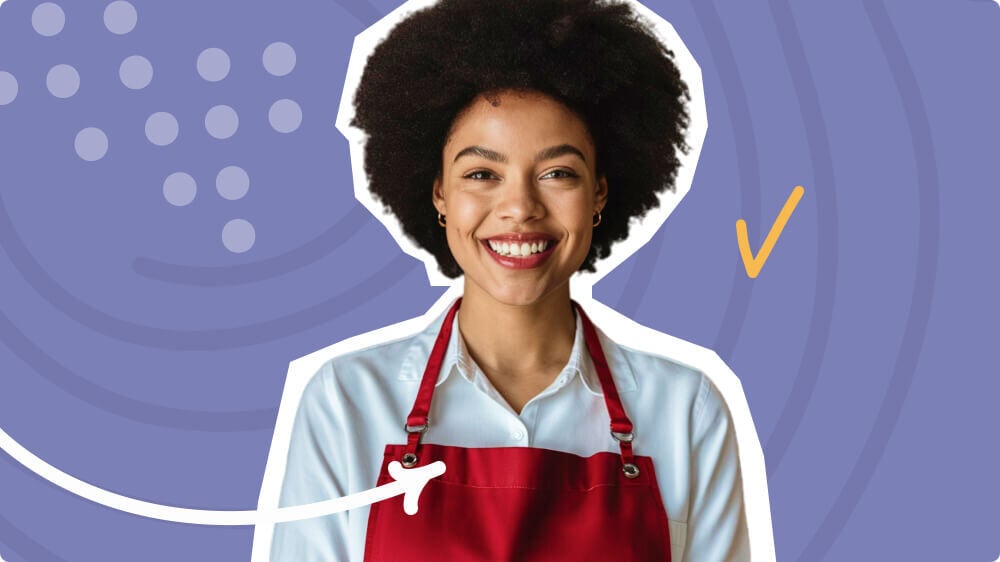A few months ago, we were all excited. But as a restaurant owner, you surely had high hopes for what business could be like as things began moving toward a more stable version of the “new normal.”
Yet, it seems, for the time being, at least some of your plans may need to be put on hold because the pandemic isn’t quite over yet. And restaurant-goers still aren’t as comfortable as they used to be.
According to a National Restaurant Association survey of 1,000 adults this past August, 6 in 10 adults reported changing how they go to restaurants due to the rise of the Delta variant.
So, how do you do it? How do you run a restaurant during the covid-19 pandemic? How do you not only survive but thrive in a time where change is the only constant? Well, it’s quite simple actually.
You adapt. You become agile. And you learn how to apply lessons from successful restaurants during Covid. We know you need more info than that though!
So, in this post, we’ll be diving into 5 lessons QSR owners across the country have learned and applied during the pandemic. We’ll also be sharing some ideas on how you, too, can set yourself up for success!
5 Lessons from Successful Restaurants During Covid
#1 Adopt and Take Advantage of Digital Tools
Restaurant-goers have become more tech-savvy than ever. Consequently, they want more ways, not less, to use tech to improve their restaurant experience.
According to the National Restaurant Association’s February 2021 study, consumers reported wanting to see restaurants use more tech to do things like:
- Make ordering and payment easier (52%)
- Improve customer service (51%)
- Offer more convenient takeout and delivery options (49%)
- Make the overall restaurant experience faster (46%)
- Provide more food information; e.g. allergens, nutritional data, source (44%)
- Provide more entertainment options (29%)
How can you apply these insights? Well, for starters, aim for agility, not perfection. If you’re not already, make sure you’re on third-party apps like UberEats and Grubhub. But don’t stop there! Instead, aim to embed technologies that streamline processes and elevate the customer experience.
#2 Collect and Leverage Customer Data
Thanks to your in-house POS software, you likely already have data on your customers. But, considering the changes that have likely occurred to your customer base during the pandemic, we need to ask: is your customer data outdated? It could be.
But that doesn’t mean you’re out of luck! There are ways to collect new, more relevant data on your current customer base. One way to do this is to source data from your third-party ordering apps. For example, you could find out popular meal combinations, peak ordering times, and other user preferences to create new promotions and discounts.
But, again, you can go a step further. How? By implementing a customer loyalty program similar to the one that’s long been used by Starbucks.
Loyalty programs are also a way to collect even more data on your customers that can be used to do things like:
- Use a customer’s past purchases to create targeted ads
- Build a connection with customers by offering personalized gifts (e.g. birthday offers)
- Create a unique customer experience both online and offline
Since the start of the pandemic, QSR restaurants like Wendy’s, Burger King, White Castle, and McDonald’s have joined Starbucks in offering attractive loyalty programs. And the data supports their decision!
In Paytronix’s January 2021 “Delivering on Restaurant Rewards” report, survey results showed that loyalty programs members spent more than 2x as much as the consumers not partaking in loyalty programs.
#3 Build and Maintain Your Online Presence
Digital marketing was an important strategy for your QSR before Covid started. Now, it’s not just important. Building and maintaining a strong online presence is essential to staying relevant and at the top of your customers’ minds.
What type of things should you focus on? Start by making sure things like your menus, hours of location, and dine-in policies are up-to-date on Google and your social media profiles. Then, get innovative by investing money and effort in your social media marketing strategy.
As is the case with any digital marketing strategy, building your social media presence is a long game. But it can have huge payoffs, especially in a time when you’re less likely to get customers casually passing your restaurant while out and about.
Shake Shack can be a great source of inspiration. During the initial days of quarantine, the fast food burger chain started a social cooking series on Instagram and Tik Tok to teach consumers how to make some of the restaurant’s popular items at home.
#4 Hire Smartly and Invest in Your Staff
Hiring the right employees has always been a challenge. But, as you probably know, it’s particularly challenging right now.
According to Total Food Service, QSR owners have reported a 66% decrease in applications for front-of-house jobs and an 88% decrease in applications for delivery driver jobs. Consequently, welcoming restaurant patrons back to dine-in has not gone smoothly. In August 2021, two Chick-fil-A stores in Alabama had to close their dining rooms due to a labor shortage.
So, don’t take this challenge lightly! You’ll need to do more than you did before the pandemic to hire and retain quality staff.
When it comes to hiring, one of the best things you can do is to invest in a digital hiring platform that makes it easy for job seekers to apply, convenient for you to review applications, and simple to follow up with quality candidates. For example, by investing in Workstream’s applicant tracking system, Burger King managed to overcome a staffing problem due to low application flow and an inefficient hiring process.
To retain employees, we recommend not only financial incentives but also educational ones. Shake Shack has allocated more than $10 million to invest in restaurant-level employees. One of their initiatives is a career development program for entry-level managers who want to improve their professional and business skills.
#5 Consider Opening Ghost Kitchens
Even before the rise of the delta variant, customers were hesitant to return to restaurants for dine-in. Consequently, food delivery has been and will continue to be a popular option for many. And with that shift from dine-in to delivery, an opportunity for innovation arrived in the form of ghost kitchens.
If you’ve never heard of ghost kitchens, let us fill you in real quick. A ghost kitchen is a kitchen for food prep that isn’t attached to a brick-and-mortar location. The major benefit of a ghost kitchen is that, due to its minimal setup, the costs to run them are relatively low.
Sometimes, as Vice News reports in the video below, there are even multiple restaurant franchises operating out of the same ghost kitchen:
QSR restaurants like Wendy’s took advantage of this new restaurant model during the pandemic to accelerate their global expansion. Wendy's opened ghost kitchens around the world in locations, such as the Philippines and UK, to reach markets that their traditional brick-and-mortar restaurants could not.
Wendy’s has even made it clear that they believe the increased demand for delivery is here to stay well beyond the pandemic. The fast food chain recently announced that they plan to open 700 more ghost kitchens across the world by 2025 with the hope that each unit will earn up to $1 million a year in sales.
How can you take advantage? Well, if you own multiple franchise locations that are struggling, you might consider renovating one of them into a ghost kitchen. If so, you can use the space to just service takeout and delivery orders. Then, you may even be able to collaborate and share the costs with other restaurants in the same position.
Key Takeaways
What lies ahead for the future of the restaurant industry after Covid? Only time will tell. But, as we’ve shown in this post, there are things you can do to successfully adapt and maybe even thrive despite the current conditions!
We recommend you follow the lessons of other successful restaurants by taking steps to:
- Adopt and take advantage of digital tools
- Collect and leverage customer data
- Build and maintain your online presence
- Hire smartly and invest in your staff
- Consider opening ghost kitchens





